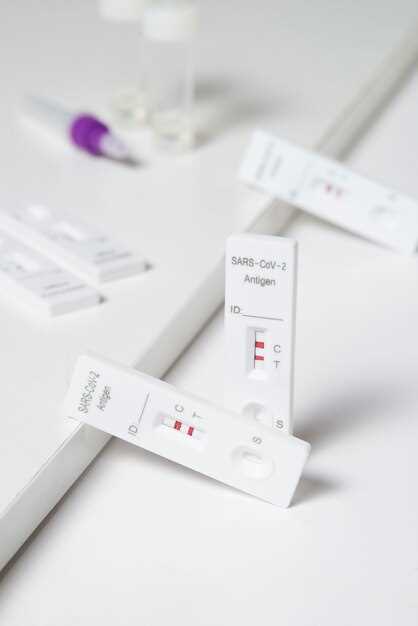
Azithromycin and erythromycin are both antibiotics used to treat a variety of bacterial infections. While they belong to the same class of antibiotics, there are some key differences between the two medications.
Azithromycin is known for its longer duration of action, requiring a shorter treatment course compared to erythromycin. It is commonly used to treat respiratory infections, skin infections, and sexually transmitted diseases.
Erythromycin, on the other hand, is often used to treat infections caused by gram-positive bacteria and is known for its effectiveness against certain strains of bacteria that are resistant to other antibiotics.
Consult your healthcare provider to determine which antibiotic is most appropriate for your infection.
Comparison of Azithromycin and Erythromycin
Azithromycin and Erythromycin are both antibiotics but differ in their chemical structure and spectrum of activity.
Azithromycin

Azithromycin belongs to the macrolide class of antibiotics and is derived from erythromycin. It has a broader spectrum of activity and is effective against a wide range of bacteria.
Erythromycin
Erythromycin is also a macrolide antibiotic but has a more narrow spectrum of activity compared to azithromycin. It is mainly used to treat respiratory tract infections, skin infections, and certain sexually transmitted diseases.
Differences:
One of the key differences between azithromycin and erythromycin is their dosing schedule. Azithromycin has a longer half-life and can be taken less frequently, making it more convenient for patients. Erythromycin, on the other hand, needs to be taken multiple times a day.
Another difference is their side effect profile. Azithromycin is generally better tolerated with fewer gastrointestinal side effects compared to erythromycin, which is known to cause more stomach upset and diarrhea.
Overall, while both azithromycin and erythromycin are effective antibiotics, the choice between them depends on the specific infection being treated and the patient’s individual characteristics.
Overview of Azithromycin and Erythromycin
Azithromycin and Erythromycin are both macrolide antibiotics that are commonly used to treat a variety of bacterial infections. They work by inhibiting protein synthesis in bacteria, thus preventing their growth and reproduction.
Mechanism of Action
Azithromycin: Azithromycin acts by binding to the 50S ribosomal subunit of the bacterial ribosome, thus blocking the translocation of peptidyl tRNA during protein synthesis.
Erythromycin: Erythromycin also binds to the 50S subunit but at a different site, preventing the formation of peptide bonds.
Overall, both antibiotics disrupt bacterial protein synthesis, leading to bacterial cell death and clearance of the infection.
Indications and Uses

Azithromycin and erythromycin are both antibiotics commonly used to treat bacterial infections. However, they have different indications and uses due to their unique properties. Here are the key indications and uses for each medication:
- Azithromycin:
- Treatment of respiratory tract infections, including bronchitis and pneumonia
- Management of sinusitis and pharyngitis
- Treatment of skin and soft tissue infections
- Therapy for sexually transmitted infections, such as chlamydia and gonorrhea
- Prophylaxis for Mycobacterium avium complex (MAC) in HIV patients
- Erythromycin:
- Treatment of respiratory tract infections, including pertussis (whooping cough)
- Management of skin and soft tissue infections
- Therapy for gastrointestinal infections, such as Campylobacter-induced diarrhea
- Prokinetic agent for patients with gastroparesis or delayed gastric emptying
- Treatment of acne vulgaris
It’s important to consult with a healthcare provider to determine the most appropriate antibiotic for your specific condition and ensure proper treatment.
Spectrum of Activity
Azithromycin:
Azithromycin is a broad-spectrum antibiotic that is effective against a wide range of bacteria, including both Gram-positive and Gram-negative bacteria. It is commonly used to treat respiratory tract infections, skin and soft tissue infections, sexually transmitted infections, and certain other bacterial infections.
Erythromycin:
Erythromycin is also a broad-spectrum antibiotic but is primarily active against Gram-positive bacteria. It is used to treat respiratory tract infections, skin and soft tissue infections, as well as some sexually transmitted infections. Erythromycin is often used as an alternative to penicillin in patients with penicillin allergies.
Spectrum of Activity
When it comes to the spectrum of activity, both azithromycin and erythromycin exhibit differences in their coverage against various bacterial strains. Azithromycin, a macrolide antibiotic, is known for its broad spectrum of activity against Gram-positive bacteria, including Streptococcus species, Staphylococcus aureus, and Streptococcus pneumoniae. It is also effective against some Gram-negative bacteria such as Haemophilus influenzae and Moraxella catarrhalis.
On the other hand, erythromycin, another macrolide antibiotic, has a narrower spectrum of activity compared to azithromycin. It is mainly effective against Gram-positive bacteria such as Streptococcus pyogenes, Streptococcus pneumoniae, and Staphylococcus aureus. Erythromycin may also target some Gram-negative bacteria like Haemophilus influenzae and Neisseria gonorrhoeae.
Summary:
In summary, azithromycin offers a broader spectrum of activity, making it a preferred choice for treating a wide range of bacterial infections. Erythromycin, although effective against specific bacterial strains, is limited in its coverage compared to azithromycin.
Safety Profile
When it comes to safety, both Azithromycin and Erythromycin have their own profiles to consider.
Azithromycin Safety
Azithromycin is generally well-tolerated by most patients. However, some common side effects may include gastrointestinal issues such as nausea, vomiting, diarrhea, and abdominal pain. Rare but serious side effects include liver problems, allergic reactions, and abnormal heart rhythms. It is important to consult with a healthcare provider before taking Azithromycin to discuss any potential risks.
Erythromycin Safety
Erythromycin is also considered relatively safe for most patients. Common side effects may include gastrointestinal disturbances like nausea, vomiting, and diarrhea. In some cases, erythromycin can cause allergic reactions, liver toxicity, and skin rashes. It is essential to inform your healthcare provider about any existing medical conditions or medications to avoid potential interactions with erythromycin.
| Aspect | Azithromycin | Erythromycin |
|---|---|---|
| Common Side Effects | Nausea, vomiting, diarrhea, abdominal pain | Nausea, vomiting, diarrhea |
| Serious Side Effects | Liver problems, allergic reactions, abnormal heart rhythms | Allergic reactions, liver toxicity, skin rashes |
| Precautions | Discuss with healthcare provider, monitor for side effects | Inform healthcare provider about medical history and medications |
